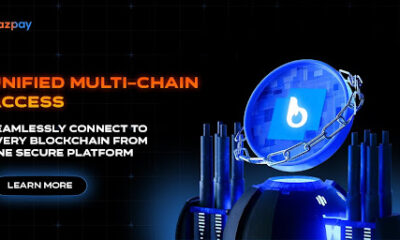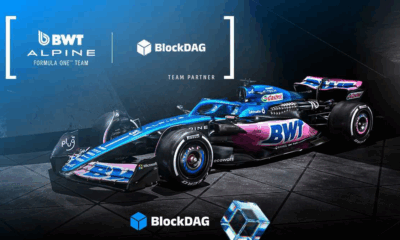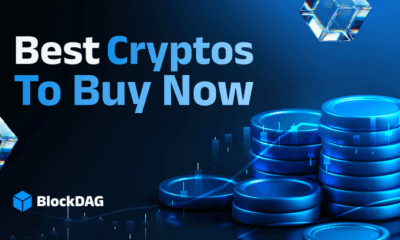Financial
BlockDAG, Solana, Shiba Inu, & Ethereum: Evaluating the Top Crypto to Watch for Future Growth
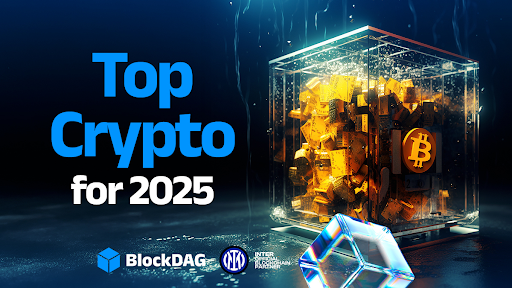
With countless crypto projects on the market, narrowing the field to those with both immediate impact and long-term viability is essential. BlockDAG (BDAG), Shiba Inu (SHIB), Solana (SOL), and Ethereum (ETH) each bring unique features that make them stand out.
BlockDAG is reshaping mining through decentralisation and scalability, while Shiba Inu’s community continues to drive its momentum. Solana remains a leading Layer 1 platform with strong user growth, and Ethereum’s continued development reinforces its position in DeFi and asset tokenisation. This article explores why these four stand among the top crypto to watch going forward.
1. BlockDAG’s Mining Network Offers Real Utility & Growth
BlockDAG is setting new standards in crypto mining. Its X-series mining equipment combines quiet operation with high energy efficiency, helping to reduce environmental impact. Users can also mine directly from their phones without overloading their devices.
Designed for everyone from beginners to experienced participants, BlockDAG’s mining ecosystem includes the X1 mobile app and high-performance rigs like the X10, X30, and X100. These rigs offer superior hash power, outperforming most competitors in energy output.
BlockDAG supports diverse earning models. Users can mine at different levels and resell their hardware through online marketplaces. Daily yields range from 20 to 2,000 BDAG coins, providing flexibility across user tiers.
With $315 million raised during its presale and 23 billion coins sold, BlockDAG’s adoption is accelerating. Early participants in Batch 1 saw a 2,660% return. The limited-time offer of $0.0020 presents a compelling entry for those looking to join a project with strong momentum.
2. Solana’s Expanding User Base & ETF Hopes Fuel Growth
Solana (SOL) is currently trading between $147.15 and $150, moving within a 24-hour range of $144 to $154. It continues to hold its place as a high-performance Layer 1 blockchain, leading in areas like DeFi, NFTs, and development activity. More than 11.6 million wallets now hold at least 0.1 SOL, showing strong engagement across users.
Several key developments could further boost Solana’s standing. The upcoming Solaxy ICO and ecosystem launches are expected to drive more on-chain activity. Additionally, analysts see a 91% likelihood that a Solana ETF will be approved before the end of 2025, which could attract major institutional capital.
3. Shiba Inu Maintains Strong Engagement & Ecosystem Growth
Shiba Inu (SHIB), often labelled as a meme coin, continues to show remarkable resilience and enthusiasm from its community. At $0.00001172, its price reflects overall sentiment but remains influenced by strong holder activity. Even with some selloffs, SHIB’s burn rate has increased sharply, reducing supply.
Shibarium, the project’s layer-2 solution, continues to expand. With rising wallet activity and more ecosystem utilities being introduced, SHIB is evolving beyond its meme status. This consistent development reinforces its place among the top crypto to watch for potential long-term upside.
4. Ethereum Holds Ground While Building Toward Institutional Adoption
Ethereum (ETH) is currently consolidating, trading within a narrow band between $2,428 and $2,635. Although it faces downward pressure, a move above $2,635 could trigger bullish momentum, while a dip below $2,400 might lead to further correction.
Despite its sideways trend, Ethereum continues to attract capital through spot ETF inflows. Its adoption for real-world asset tokenisation is also increasing. Long-term, Ethereum’s value lies in its network upgrades, rising institutional interest, and its role at the centre of decentralised finance and tokenisation.
Evaluating the Top Crypto to Watch
BlockDAG, Shiba Inu, Solana, and Ethereum each bring unique strengths, making them some of the top crypto to watch for the months ahead. BlockDAG leads with its innovative and accessible mining tools, which have raised $315 million and attracted millions of users.
Shiba Inu’s ecosystem continues to evolve, while Solana’s expanding user base and ETF prospects strengthen its case. Ethereum’s upgrades and financial use cases ensure it stays relevant for long-term strategies.
For those seeking exposure to promising crypto technologies, these four projects offer different paths toward growth, innovation, and real-world value in the evolving blockchain space.
Crypto Currency
Cathie Wood Reveals Her Top Crypto Picks for the Next 3–5 Years: BTC, ETH, and SOL
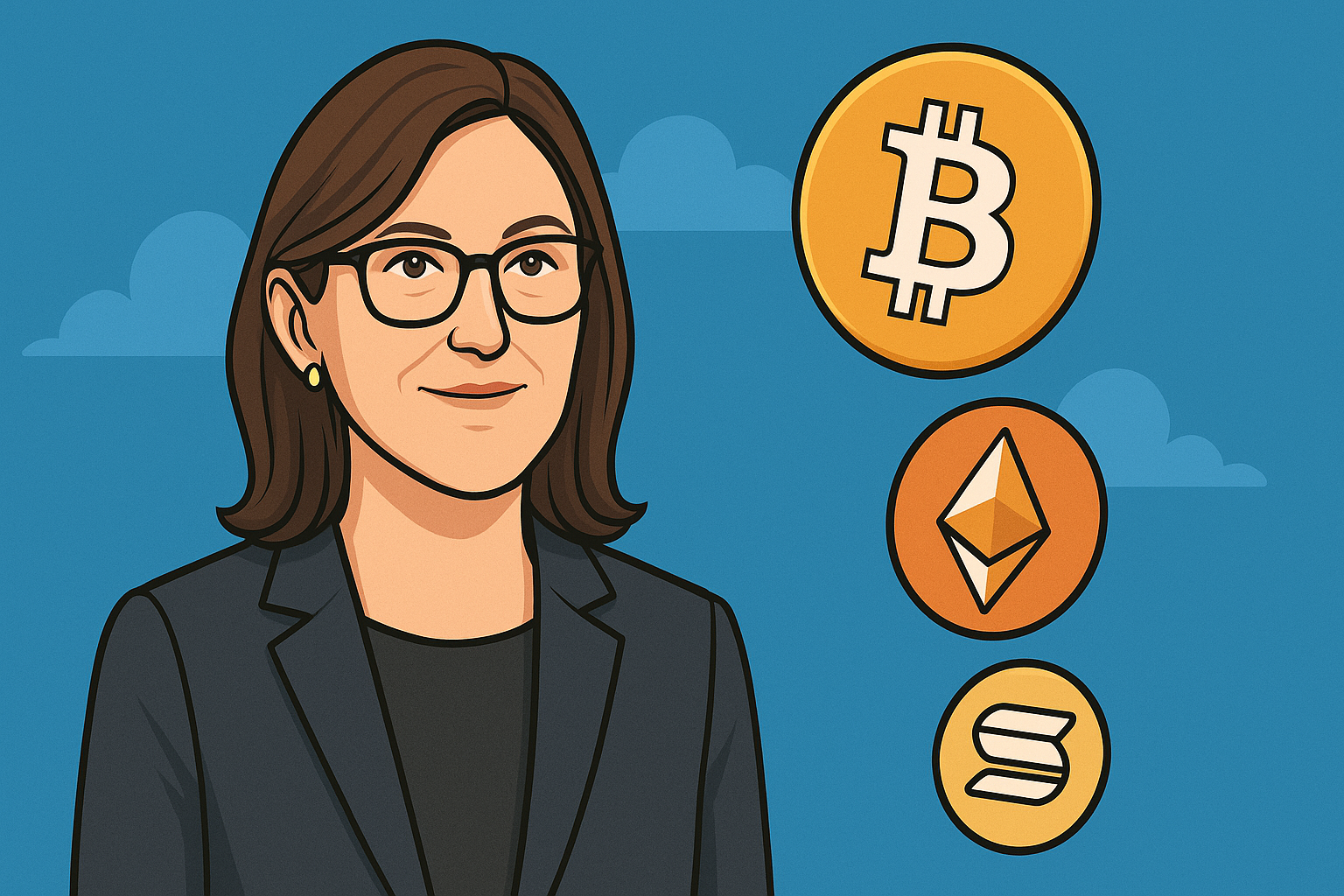
Cathie Wood, CEO of Ark Invest, is known for making bold predictions—and this time, she’s zeroing in on the crypto networks she believes will define the next market cycle. According to Wood, institutional capital has permanently transformed the digital-asset landscape. Market volatility already behaves differently than in previous cycles, and three networks stand out as long-term winners: Bitcoin, Ethereum, and Solana. Each plays a uniquely important role in the future of crypto investing.
Why Bitcoin, Ethereum, and Solana Lead the List
1. Bitcoin (BTC): The Institutional Base Layer
Bitcoin remains Wood’s top pick, driven largely by liquidity. Large institutions require deep, stable markets before allocating serious capital—and Bitcoin still offers the strongest entry point. As the first and largest crypto asset, Bitcoin sets the tone for the entire industry.
Its fundamentals remain powerful. The most recent halving on April 20, 2024, reduced mining rewards to 3.125 BTC per block, slowing supply growth. Historically, each halving has triggered multi-year appreciation cycles. With issuance now lower than ever, long-term structural demand continues building.
2. Ethereum (ETH): The Institutional Innovation Layer
Ethereum takes second place thanks to its growing role in institutional infrastructure. Enterprises, banks, and funds already build applications on Ethereum’s base layer, while Layer-2 networks offer scalable throughput without compromising security.
Ethereum may seem less flashy than newer chains, but for professional capital, reliability outweighs hype. Its ecosystem supports stable, predictable development—an attractive trait for institutional portfolios.
3. Solana (SOL): The Consumer Adoption Engine
Solana ranks third as the most user-friendly major network. Its speed, low fees, and simple architecture allow developers to create games, social apps, and payment tools without navigating complex layers.
This consumer-first experience is driving adoption at a rapid pace. Users interact with Solana apps the way they interact with traditional web platforms—making it an ideal network for mainstream onboarding.
How Institutions Are Redefining Crypto Cycles
Wood argues that the classic four-year Bitcoin boom-and-bust cycle is fading. Institutional involvement is replacing speculative trading behavior. Long-term holders now dominate the supply, reducing volatility and dampening extreme price swings.
Bitcoin increasingly behaves like a macro-sensitive risk asset—reacting to economic growth, stock-market trends, and global liquidity conditions. This signals maturity, not weakness.
Ethereum and Solana show similar patterns. Valuations are now more closely tied to broader market forces rather than retail-driven hype. Crypto is effectively becoming part of global portfolio construction.
A Clear Roadmap for the Next 3–5 Years
Cathie Wood’s rankings outline a disciplined new structure for crypto investing:
- Bitcoin offers liquidity and macro-level durability.
- Ethereum delivers secure, institutional-grade innovation.
- Solana powers mainstream consumer adoption.
Together, these networks form a stronger foundation for a maturing digital-asset ecosystem—one defined less by wild speculation and more by long-term utility, integration, and professional capital.
Crypto
UK Unveils New Comprehensive Crypto Regulatory Framework
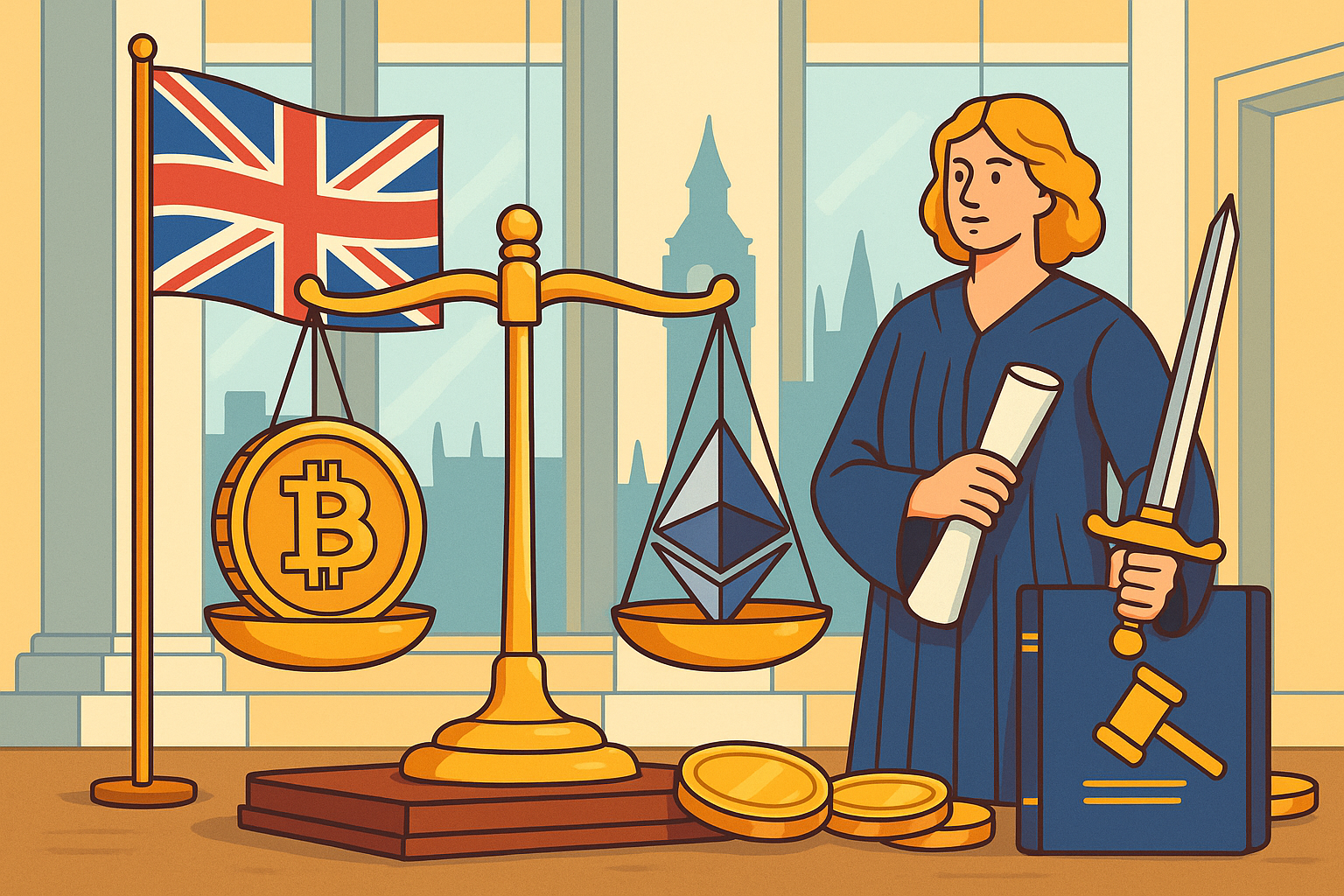
The United Kingdom has introduced a sweeping new regulatory framework designed to reshape how Bitcoin and the broader crypto market operate within the country. Led by the Treasury and the Financial Conduct Authority (FCA), the framework is expected to be fully implemented by late 2026, marking one of the most significant shifts in the UK’s approach to digital assets.
Key Takeaways
- The UK has set a formal regulatory structure for Bitcoin and cryptocurrency markets.
- The framework introduces newly regulated activities across the crypto sector.
- Digital assets are now officially recognized as personal property under UK law.
A New Era of Crypto Regulation in the UK
Instead of issuing a broad crackdown, the UK has released a detailed regulatory regime covering Bitcoin, stablecoins, and a range of cryptoassets. This structured approach brings oversight to areas previously left unregulated, creating clearer rules for companies and investors.
The FCA will take the lead in writing and enforcing the rulebook governing crypto operations. Meanwhile, HMRC will introduce new tax-reporting requirements. In parallel, the Ministry of Justice has passed new legislation confirming that digital assets now qualify as personal property, giving crypto assets stronger legal protections in cases involving theft, fraud, or disputes.
What the New Framework Means for the Industry
Crypto exchanges, custodians, token issuers, and service providers operating in the UK will be required to obtain FCA authorization. They must follow rules focused on safekeeping customer assets, maintaining proper financial resources, and adhering to conduct and governance standards.
These rules represent a major shift from the UK’s previous AML-only oversight. The broader framework now includes market-abuse rules, investor protection requirements, and operational risk guidelines — more in line with traditional financial regulation.
While compliance costs will increase, firms operating within the UK market will benefit from clearer regulations and greater legal certainty. Additionally, Bitcoin, Ethereum, stablecoins, and other digital assets will receive improved safeguards under UK law.
Aligning With Global Regulatory Trends
The UK’s new crypto regime reflects a global movement toward full-spectrum regulation, similar to what the European Union is implementing under MiCA. By aiming for a late-2026 rollout, the UK positions itself as a leader among major financial hubs modernizing their digital-asset oversight.
These changes will influence how BTC, ETH, and stablecoins operate in the UK, shaping long-term market strategy, company resource allocation, and consumer protection standards.
Blockchain
State Street and Galaxy to Launch Solana-Based Tokenized Fund, Marking a Major Milestone for Onchain Finance
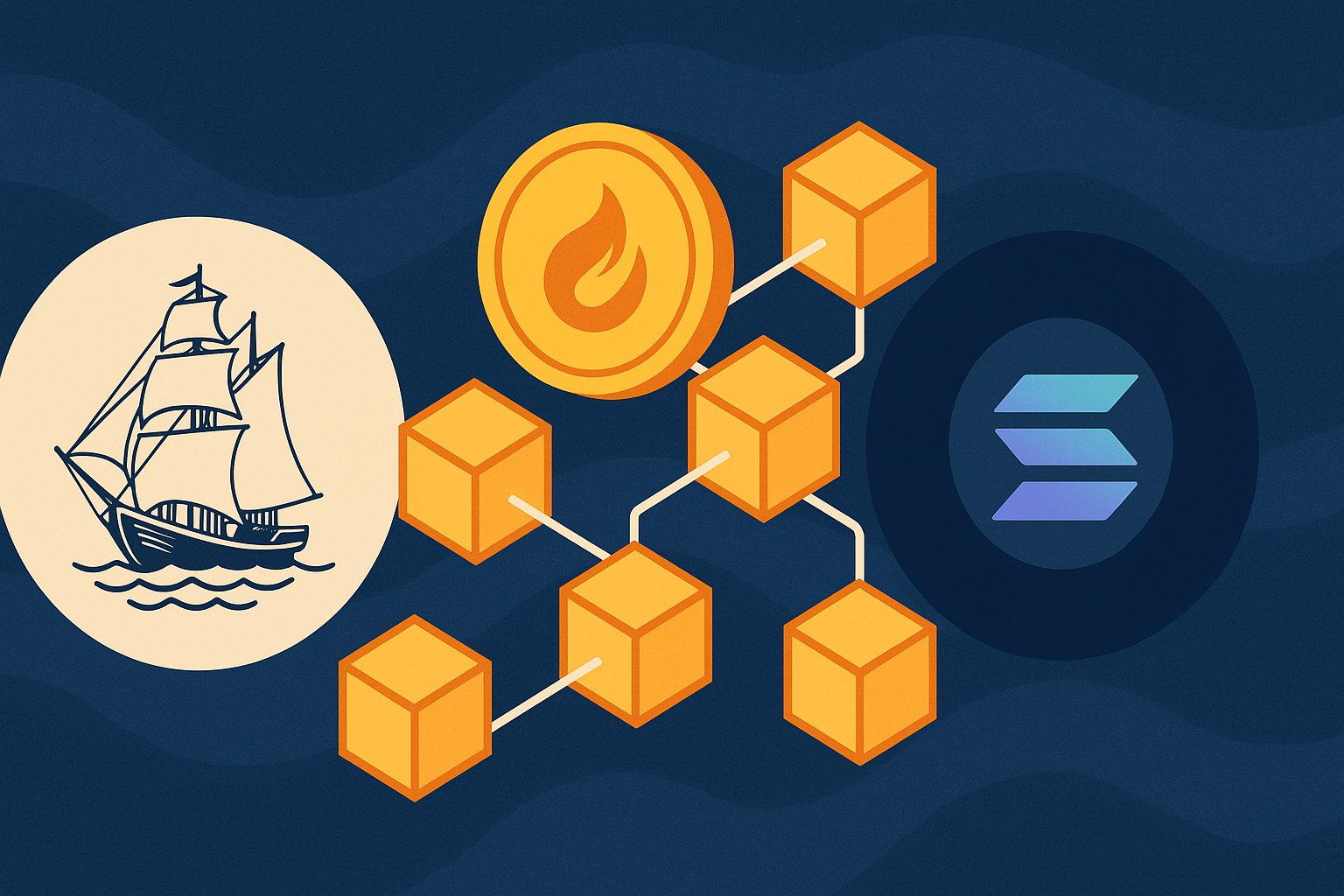
State Street and Galaxy Asset Management are taking tokenized finance to a new level with the announcement of the State Street Galaxy Onchain Liquidity Sweep Fund (SWEEP), set to launch on Solana in early 2026. The initiative represents a major leap for institutional blockchain adoption, marking the first time a global systemically important bank issues a product directly on Solana. Backed by Ondo Finance’s $200 million commitment, SWEEP aims to deliver an institutional-grade, fully onchain cash-management solution powered by PYUSD.
SWEEP Becomes the First Solana-Based Offering From a Global Bank
SWEEP will issue its initial tokens on Solana, chosen for its fast settlement times, low fees, and strong ecosystem for institutional-grade tokenization. The companies noted that this marks the first Solana-issued product from a top-tier global bank — a milestone that underscores how quickly the blockchain is becoming a preferred platform for real-world assets (RWAs).
While Solana will serve as the launch network, State Street and Galaxy confirmed that future expansions will support Stellar and Ethereum, with Chainlink infrastructure enabling secure cross-chain data and asset transfers.
24/7 Investor Flows Powered by PYUSD
Unlike traditional financial products limited by banking hours, SWEEP will operate around the clock, offering continuous subscription and redemption flows using PayPal’s PYUSD. This design provides institutions with a cash-like onchain product that preserves the liquidity and accessibility of traditional sweep accounts, but with blockchain-native transparency and automation.
Only Qualified Purchasers who meet regulatory standards will be eligible to invest in SWEEP.
State Street Bank and Trust Company will serve as the custodian for the fund’s underlying treasury assets, preserving the compliance and security institutions expect.
A New Era of Onchain Cash Management for Institutions
SWEEP is tailored specifically for institutions seeking to manage liquidity onchain without sacrificing the stability of traditional cash instruments. Kim Hochfeld, State Street’s global head of cash and digital assets, said the collaboration signals a major shift in how banks and crypto-native firms work together, allowing them to jointly push forward the evolution of onchain financial infrastructure.
Galaxy’s global head of asset management, Steve Kurz, emphasized that the product is designed to give digital-first investors a new operational liquidity tool, supported by Galaxy’s digital infrastructure for issuance and lifecycle management.
Ondo Strengthens Tokenization Momentum With $200M Investment
Ondo Finance President Ian De Bode highlighted that the firm’s $200 million seed commitment reinforces the accelerating convergence between traditional finance and blockchain-based markets. Tokenized funds like SWEEP, he noted, offer more efficient operating models and unlock new liquidity pathways for institutions.
State Street, Galaxy, and Ondo already share a history of collaboration, including partnerships around digital asset ETFs launched in 2024. SWEEP continues that trajectory while signaling growing confidence in tokenization as a core pillar of institutional finance.
A Transformative Step for Institutional Onchain Products
With SWEEP, State Street and Galaxy are positioning themselves at the forefront of tokenized asset innovation. By combining institutional-grade custody, blockchain-native liquidity, and a public network like Solana, the fund demonstrates how traditional finance and crypto infrastructure can now operate side by side — and in many cases, enhance one another.
As 2026 approaches, SWEEP could become one of the most influential institutional tokenization launches yet, paving the way for more real-world assets to move onchain.
-

 Crypto3 years ago
Crypto3 years agoCardalonia Aiming To Become The Biggest Metaverse Project On Cardano
-
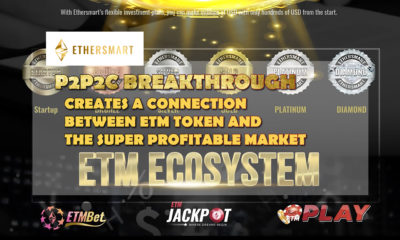
 Press Release5 years ago
Press Release5 years agoP2P2C BREAKTHROUGH CREATES A CONNECTION BETWEEN ETM TOKEN AND THE SUPER PROFITABLE MARKET
-
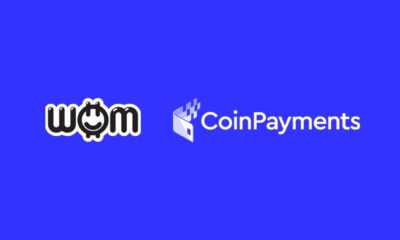
 Blockchain5 years ago
Blockchain5 years agoWOM Protocol partners with CoinPayments, the world’s largest cryptocurrency payments processor
-

 Press Release5 years ago
Press Release5 years agoETHERSMART DEVELOPER’S VISION MADE FINTECH COMPANY BECOME DUBAI’S TOP DIGITAL BANK
-
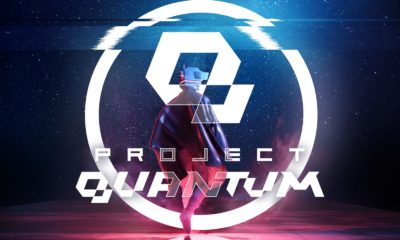
 Press Release5 years ago
Press Release5 years agoProject Quantum – Decentralised AAA Gaming
-

 Blockchain5 years ago
Blockchain5 years agoWOM Protocol Recommended by Premier Crypto Analyst as only full featured project for August
-

 Press Release5 years ago
Press Release5 years agoETHERSMART DEVELOPER’S VISION MADE FINTECH COMPANY BECOME DUBAI’S TOP DIGITAL BANK
-

 Blockchain6 years ago
Blockchain6 years ago1.5 Times More Bitcoin is purchased by Grayscale Than Daily Mined Coins

